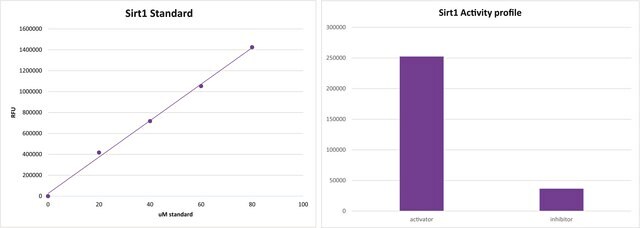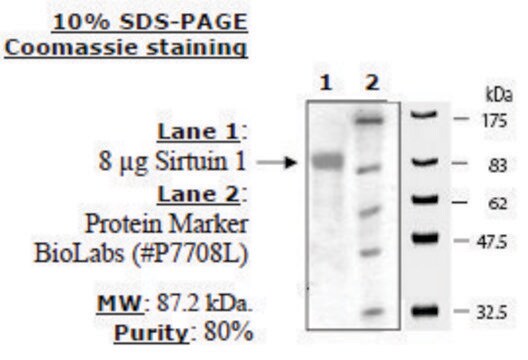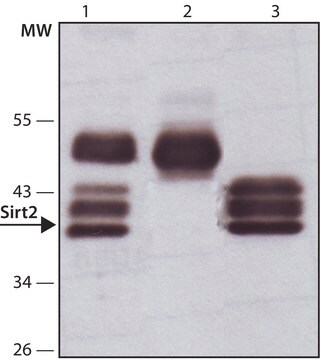S8446
SIRT1 Peptide
≥90% (SDS-PAGE), human recombinant, expressed in E. coli, N-terminal histidine tagged
Sinónimos:
SIR2α, SIR2L1, Sirtuin1
About This Item
Productos recomendados
Nombre del producto
Sirt1 human, recombinant, expressed in E. coli, N-terminal histidine tagged, ≥90% (SDS-PAGE), buffered aqueous glycerol solution
recombinant
expressed in E. coli
Quality Level
description
full-length amino acid sequence of original SIRT1 protein (accession number NP_036370)
assay
≥90% (SDS-PAGE)
form
buffered aqueous glycerol solution
UniProt accession no.
shipped in
dry ice
storage temp.
−20°C
Gene Information
human ... SIRT1(23411)
General description
Application
Biochem/physiol Actions
Physical form
Related product
Storage Class
12 - Non Combustible Liquids
wgk_germany
WGK 1
flash_point_f
Not applicable
flash_point_c
Not applicable
Elija entre una de las versiones más recientes:
¿Ya tiene este producto?
Encuentre la documentación para los productos que ha comprado recientemente en la Biblioteca de documentos.
Nuestro equipo de científicos tiene experiencia en todas las áreas de investigación: Ciencias de la vida, Ciencia de los materiales, Síntesis química, Cromatografía, Analítica y muchas otras.
Póngase en contacto con el Servicio técnico








